Top 10 Historical Sites / Places in Langkawi
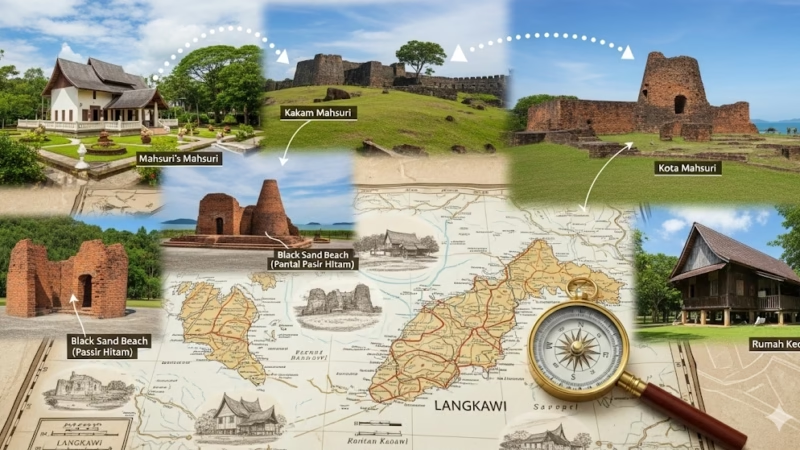
Introduction
Langkawi, the “Jewel of Kedah,” isn’t just about beaches, luxury resorts, and duty-free shopping—it’s also steeped in history, myths, and culture. The island’s landscapes are dotted with legendary tombs, ancient wells, colonial remnants, and sacred sites that tell fascinating tales of Malay folklore and heritage.
In this ultimate guide to Langkawi’s top 10 historical sites for 2025, we’ll explore the must-visit places where history and legend meet. Whether you’re a curious traveler, history buff, or cultural explorer, these sites will give you a deeper connection to Langkawi beyond its natural beauty.
Top 10 Historical Sites / Places in Langkawi
1. Mahsuri’s Tomb (Makam Mahsuri)
📍 Location: Kampung Mawat, Langkawi
🏝️ Setting: Heritage complex with tomb, museum, and cultural village
🛎️ Best For: History lovers, culture enthusiasts
⭐ Highlights: The legendary resting place of Mahsuri, a Malay heroine accused of adultery and executed unjustly 200 years ago.
Mahsuri’s Tomb is Langkawi’s most iconic historical landmark. According to legend, Mahsuri cursed the island for seven generations after her wrongful death, shaping much of Langkawi’s folklore. The site features her tomb, a museum displaying artifacts from the Kedah Sultanate era, and a cultural complex where you can watch traditional performances. Visitors can immerse themselves in Mahsuri’s story, which blends myth, tragedy, and history. It’s a must-visit for understanding Langkawi’s cultural identity.
2. Kota Mahsuri (Mahsuri’s Exhibition Centre)
📍 Location: Near Makam Mahsuri, Kampung Mawat
🏝️ Setting: Traditional Malay house and exhibition halls
🛎️ Best For: Folklore seekers, family visits
⭐ Highlights: Traditional Kedah architecture, Mahsuri’s personal story, interactive cultural displays
Kota Mahsuri complements Makam Mahsuri by bringing her legend to life. Visitors can explore replicas of old Malay houses, exhibitions on Langkawi’s early settlers, and a cultural stage showcasing traditional music and dance. The setting reflects a 19th-century Malay kampung, making it both educational and visually enriching. Families, in particular, enjoy this spot for its storytelling appeal.
3. Mahsuri’s Well (Telaga Mahsuri)
📍 Location: Near Makam Mahsuri
🏝️ Setting: Small heritage site with a historic well
🛎️ Best For: Cultural explorers, folklore enthusiasts
⭐ Highlights: The legendary well said to be the source of Mahsuri’s mystical purity and enduring beauty
Close to Mahsuri’s Tomb lies Mahsuri’s Well, believed to have been her bathing place. Locals consider its waters sacred, with some believing it has healing properties. Today, the well remains a symbolic reminder of her purity and the tragic injustice she faced. Though smaller compared to other attractions, it’s worth visiting as part of the larger Mahsuri historical circuit.
4. Field of Burnt Rice (Beras Terbakar)
📍 Location: Padang Matsirat, Langkawi
🏝️ Setting: Open-air site with historical relics
🛎️ Best For: History enthusiasts, cultural explorers
⭐ Highlights: Burnt rice remnants from 1821 when villagers set fire to their harvest to resist Siamese invaders
The Field of Burnt Rice is a poignant reminder of Langkawi’s wartime struggles. During the Siamese invasion in the early 19th century, villagers set their rice fields on fire to prevent them from falling into enemy hands. Today, visitors can still see traces of charred rice grains unearthed from the soil, giving this site an authentic connection to the island’s resilience.
5. Langkawi UNESCO Global Geopark (Historical Elements)
📍 Location: Across Langkawi (notable sites include Kilim Karst & Gunung Mat Cincang)
🏝️ Setting: Natural landscapes with cultural legends
🛎️ Best For: Nature lovers, history and geology fans
⭐ Highlights: Geological formations tied to local myths, including tales of giants and princesses
Langkawi’s UNESCO Global Geopark isn’t just about dramatic landscapes—it’s also home to legends and myths woven into the natural environment. Sites like Gunung Mat Cincang and Gunung Raya are linked to mythical battles, while limestone formations carry stories passed down through generations. Visitors can enjoy guided tours that combine geology with folklore, making this an immersive historical experience.
6. Galeria Perdana
📍 Location: Kilim, Langkawi
🏝️ Setting: Museum with elegant halls and artifacts
🛎️ Best For: History lovers, museum-goers
⭐ Highlights: State gifts received by Malaysia’s 4th Prime Minister, Tun Dr. Mahathir Mohamad
Galeria Perdana offers a more modern slice of history, showcasing Malaysia’s diplomatic and cultural connections during Dr. Mahathir’s leadership. The museum houses a wide variety of state gifts, artworks, and historical artifacts from around the world, reflecting Malaysia’s place in global history. It’s a fascinating stop for those who enjoy cultural diplomacy and modern heritage.
7. Al-Hana Mosque
📍 Location: Kuah Town, Langkawi
🏝️ Setting: Islamic architecture with golden domes
🛎️ Best For: Cultural and spiritual travelers
⭐ Highlights: Langkawi’s largest mosque, blending Middle Eastern and Malay design elements
The Al-Hana Mosque, built in 1959, stands as Langkawi’s most prominent place of worship. Its golden domes and intricate Islamic motifs make it a significant cultural landmark. Visitors are welcome outside prayer times, where they can admire its architecture and learn about Islamic traditions on the island. It’s both a spiritual site and a historical monument.
8. Eagle Square (Dataran Lang)
📍 Location: Kuah Town Waterfront
🏝️ Setting: Landmark plaza with a massive eagle statue
🛎️ Best For: Icon hunters, cultural explorers
⭐ Highlights: The 12-meter eagle statue symbolizing Langkawi’s name, derived from “Helang” (eagle)
Eagle Square is one of Langkawi’s most photographed landmarks, featuring a giant reddish-brown eagle taking flight. While modern, it holds deep cultural significance as the eagle is central to the island’s identity. Overlooking the sea, the square combines symbolism with stunning scenery, making it a must-visit for first-timers.
9. Laman Padi Langkawi (Rice Garden Museum)
📍 Location: Pantai Cenang
🏝️ Setting: Open-air museum with rice fields and galleries
🛎️ Best For: Culture enthusiasts, family visits
⭐ Highlights: Showcases Malaysia’s rice farming heritage with interactive activities
Laman Padi Langkawi is both a museum and a working rice field. Visitors can stroll through paddy fields, see traditional farming tools, and learn about the island’s agricultural past. Interactive activities such as planting and harvesting rice make it engaging for families and kids. This site beautifully blends heritage with hands-on learning.
10. Kuah Town Old Quarter
📍 Location: Kuah Town, Langkawi
🏝️ Setting: Streets with colonial-era shops and cultural heritage
🛎️ Best For: Walking tours, cultural explorers
⭐ Highlights: Old shophouses, traditional trades, and a glimpse into Langkawi’s trading history
Kuah Town’s Old Quarter may not be grand, but it’s where Langkawi’s commercial and cultural life began. The colonial-era shoplots, traditional sundry stores, and old coffee shops still reflect a bygone era. Exploring on foot gives visitors a sense of Langkawi’s evolution from a small trading hub to a major tourism destination.
Quick Comparison Table
| Historical Site | Location | Best For | Highlights |
|---|---|---|---|
| Mahsuri’s Tomb | Kampung Mawat | History lovers | Legendary heroine’s resting place |
| Kota Mahsuri | Kampung Mawat | Folklore seekers | Traditional Malay village setting |
| Mahsuri’s Well | Kampung Mawat | Cultural explorers | Sacred well linked to Mahsuri |
| Field of Burnt Rice | Padang Matsirat | History buffs | Charred rice remnants from 1821 |
| Langkawi Geopark | Island-wide | Nature + history fans | Myths tied to landscapes |
| Galeria Perdana | Kilim | Museum-goers | Diplomatic gifts, artifacts |
| Al-Hana Mosque | Kuah | Spiritual travelers | Iconic mosque with golden domes |
| Eagle Square | Kuah Waterfront | Icon hunters | 12-meter eagle statue |
| Laman Padi Langkawi | Pantai Cenang | Families, culture fans | Rice heritage and farming activities |
| Kuah Town Old Quarter | Kuah | Cultural explorers | Colonial-era shops and trading history |
FAQs about Visiting Historical Sites in Langkawi
1. Is Langkawi good for a honeymoon with historical sightseeing?
Yes! Couples can blend romance with cultural exploration by visiting Mahsuri’s Tomb, Laman Padi, and Eagle Square alongside beach resorts.
2. Are Langkawi’s historical sites family-friendly?
Definitely. Places like Kota Mahsuri and Laman Padi have interactive activities and storytelling suitable for children.
3. Can budget travelers explore these sites easily?
Yes. Many sites have low or no entrance fees, making them accessible for all budgets.
4. When is the best time to explore Langkawi’s historical places?
November to April (dry season) is best for walking tours and open-air sites like Burnt Rice Field and Kuah Old Quarter.
5. Do I need a guide for Langkawi’s historical attractions?
Not strictly, but having a local guide can enhance storytelling, especially at folklore-heavy sites like Makam Mahsuri.
Conclusion
Langkawi’s charm goes far beyond its beaches—it’s an island of myths, legends, and history waiting to be discovered. From Mahsuri’s tragic tale to the Field of Burnt Rice, every site adds depth to your journey. Whether you’re a history buff, a cultural explorer, or just looking to add something meaningful to your beach getaway, Langkawi’s historical places offer unforgettable experiences.
👉 Plan your 2025 trip early to make the most of Langkawi’s rich heritage and hidden stories!


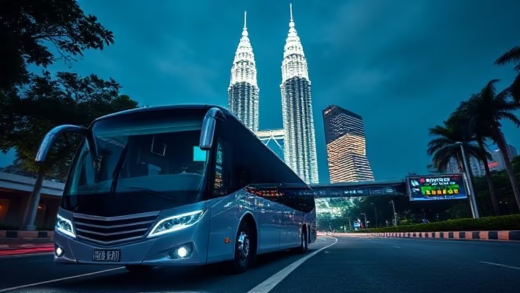
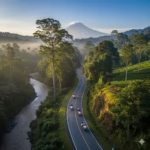

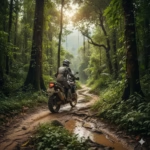

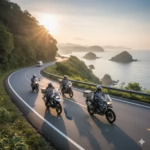
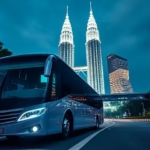

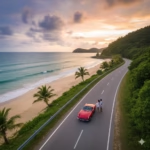

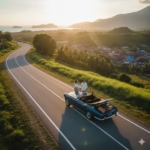
Comments are closed.